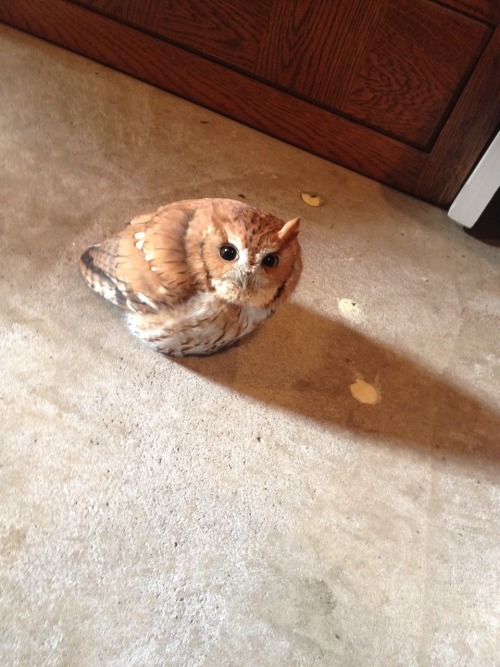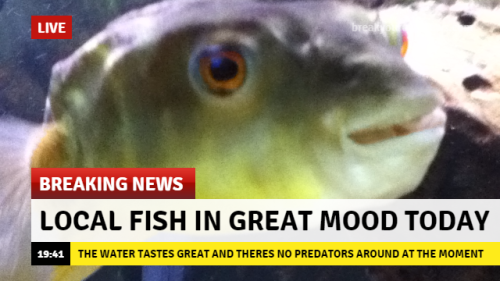Climate Change Could Kill 534,000 People In 2050

Climate change could kill 534,000 people in 2050
If you’ve ever needed a statistic to slap you in the face to make you give a damn about climate change, this is it: A new report from The Lancet estimates more than 500,000 adults could die in 2050, thanks to how climate change will kill crop productivity, altering the diets and available food all over the world.
Follow @the-future-now
More Posts from Llamaslikesciencetoo and Others



The Silent Flying of an Owl.
The video shows how effortlessly an owl fly’s compared to other bird species.
A pigeon that has a relatively large body and small wings needs to flap furiously to produce enough lift. A falcon has large wings that move more aggressively so the bird can gain much faster speeds.
Both birds create large turbulence in the air and noise as a result. Comparatively, the owl is the perfect night time hunter, silently flying through the sky.








Uncovering the Willow Ptarmigan Diorama
OKAY SO THIS IS COOL. The Reptile Hall is getting ready to undergo some renovations, and the first step in the process was to dismantle the square diorama case which previously housed Carl Akeley’s striped hyenas in the corner of the hall. But what NOBODY EXPECTED was to find a hidden diorama that had been blocked from view for ??? years.
Not only that, this is a really, really cool diorama because it’s actually two dioramas in one. The lighting mechanism isn’t functional right now, but when you approach you notice that it’s dark. The idea is that there’d be two lighting sources, two scenes (with two animals) that mirror one another, and a two way mirror.
The photos I snapped depict a willow ptarmigan (Lagopus lagopus) in a summer scene, sporting its summer plumage. In the winter, the bird’s plumage turns white. Here, the summer diorama is actually mounted to the ceiling of the diorama case, so when you shine a light through the front of the glass, that’s what is reflected back from the two way mirror. That means, behind the mirror is the second diorama: the winter scene, with a reversed taxidermied ptarmigan in a mirrored, winter landscape. Visitors could then approach the diorama and experience two different camouflage phases of the same animal, seamlessly fading from one to the other.
I hope we can fix up the lights again soon because this is AWESOME
Ptarmigan Bird Exhibit, Seasonal Plumage, Hall 20 diorama © The Field Museum, Z86694 and © The Field Museum, Z86693.


It’s a cute little thing though.

Photograph of a pregnant uterus (womb) from a New Forest pony, approximately five months into the pregnancy. The developing pony (fetus) is outside the uterus but remains attached by its membranes and umbilical cord. The bent back legs of the fetus are sticking out from the membranes (top right-hand side). The uterus has been cut open to reveal its vast blood supply, which is visible on the inner surface. This historical specimen is from a cull animal that happened to be pregnant at the time. It is preserved in formalin in a Perspex container and was photographed in the Anatomy Museum of the Royal Veterinary College in London. (Credit: Michael Frank, Royal Veterinary College / Wellcome Images)



Just some lesser known facts about octopuses you guys might like.
Every shark week special ever
Presenter: Sharks are actually quite gentle creatures see?
Presenter: Gets into the water
Narrator: HE JUMPS INTO THE OCEAN PUTTING HIS LIFE IN MORTAL DANGER

Follow on instagram @bad_science_jokes



Meet the orchid mantis.
Orchid mantises—particularly juveniles—seem aptly named. They’re predominantly white with pink or yellow accents, similar to some orchids and other flowers, and their four hind legs are lobed, like petals. But if you search for an exact floral counterpart, as behavioral ecologist James O’Hanlon did, you probably won’t find one. “I spent forever looking for a flower that they look just like,” he says, to no avail.
As it turns out, rather than mimicking one floral species, the insect instead may embody a “generic or an average type of flower” in order to attract bees and other pollinating insects as prey.
What’s more, as far as O’Hanlon can tell, it’s the only animal on record that “takes on the guise of a whole flower blossom” as a predatory strategy.
Learn more here.
-
 thundr-snow liked this · 8 years ago
thundr-snow liked this · 8 years ago -
 oshinytomato reblogged this · 8 years ago
oshinytomato reblogged this · 8 years ago -
 0sucre0 reblogged this · 9 years ago
0sucre0 reblogged this · 9 years ago -
 iminlovewithpoisoning liked this · 9 years ago
iminlovewithpoisoning liked this · 9 years ago -
 dumb-of-ass-pure-of-heart reblogged this · 9 years ago
dumb-of-ass-pure-of-heart reblogged this · 9 years ago -
 dumb-of-ass-pure-of-heart liked this · 9 years ago
dumb-of-ass-pure-of-heart liked this · 9 years ago -
 audimus-vox-populi reblogged this · 9 years ago
audimus-vox-populi reblogged this · 9 years ago -
 sourdopamine reblogged this · 9 years ago
sourdopamine reblogged this · 9 years ago -
 sleepyweary liked this · 9 years ago
sleepyweary liked this · 9 years ago -
 llamaslikesciencetoo reblogged this · 9 years ago
llamaslikesciencetoo reblogged this · 9 years ago -
 kbsd reblogged this · 9 years ago
kbsd reblogged this · 9 years ago -
 uptowndunk-blog liked this · 9 years ago
uptowndunk-blog liked this · 9 years ago -
 kumaton reblogged this · 9 years ago
kumaton reblogged this · 9 years ago -
 queenofthecommunistcannibals reblogged this · 9 years ago
queenofthecommunistcannibals reblogged this · 9 years ago -
 ikforkick reblogged this · 9 years ago
ikforkick reblogged this · 9 years ago -
 spaceraven reblogged this · 9 years ago
spaceraven reblogged this · 9 years ago -
 ultrunning reblogged this · 9 years ago
ultrunning reblogged this · 9 years ago -
 chingonaconcha reblogged this · 9 years ago
chingonaconcha reblogged this · 9 years ago -
 tillysgirl reblogged this · 9 years ago
tillysgirl reblogged this · 9 years ago -
 sebastchin reblogged this · 9 years ago
sebastchin reblogged this · 9 years ago -
 patheticgirl13 liked this · 9 years ago
patheticgirl13 liked this · 9 years ago -
 karolinadeaen reblogged this · 9 years ago
karolinadeaen reblogged this · 9 years ago -
 karolinadeaen liked this · 9 years ago
karolinadeaen liked this · 9 years ago -
 marogtrobbie liked this · 9 years ago
marogtrobbie liked this · 9 years ago -
 savagefangirl liked this · 9 years ago
savagefangirl liked this · 9 years ago -
 vickysmallzzz liked this · 9 years ago
vickysmallzzz liked this · 9 years ago -
 heavygioom-blog reblogged this · 9 years ago
heavygioom-blog reblogged this · 9 years ago -
 aloniall reblogged this · 9 years ago
aloniall reblogged this · 9 years ago -
 radioactive-pizza reblogged this · 9 years ago
radioactive-pizza reblogged this · 9 years ago -
 peterparker reblogged this · 9 years ago
peterparker reblogged this · 9 years ago -
 hortiklor reblogged this · 9 years ago
hortiklor reblogged this · 9 years ago -
 ljlhoon reblogged this · 9 years ago
ljlhoon reblogged this · 9 years ago -
 emmasjaja reblogged this · 9 years ago
emmasjaja reblogged this · 9 years ago -
 lookingupatthesky liked this · 9 years ago
lookingupatthesky liked this · 9 years ago -
 ishmeal-lovesyou reblogged this · 9 years ago
ishmeal-lovesyou reblogged this · 9 years ago -
 queenofthecommunistcannibals liked this · 9 years ago
queenofthecommunistcannibals liked this · 9 years ago
Mainly interested in ecology, but also the entirety of science.
179 posts